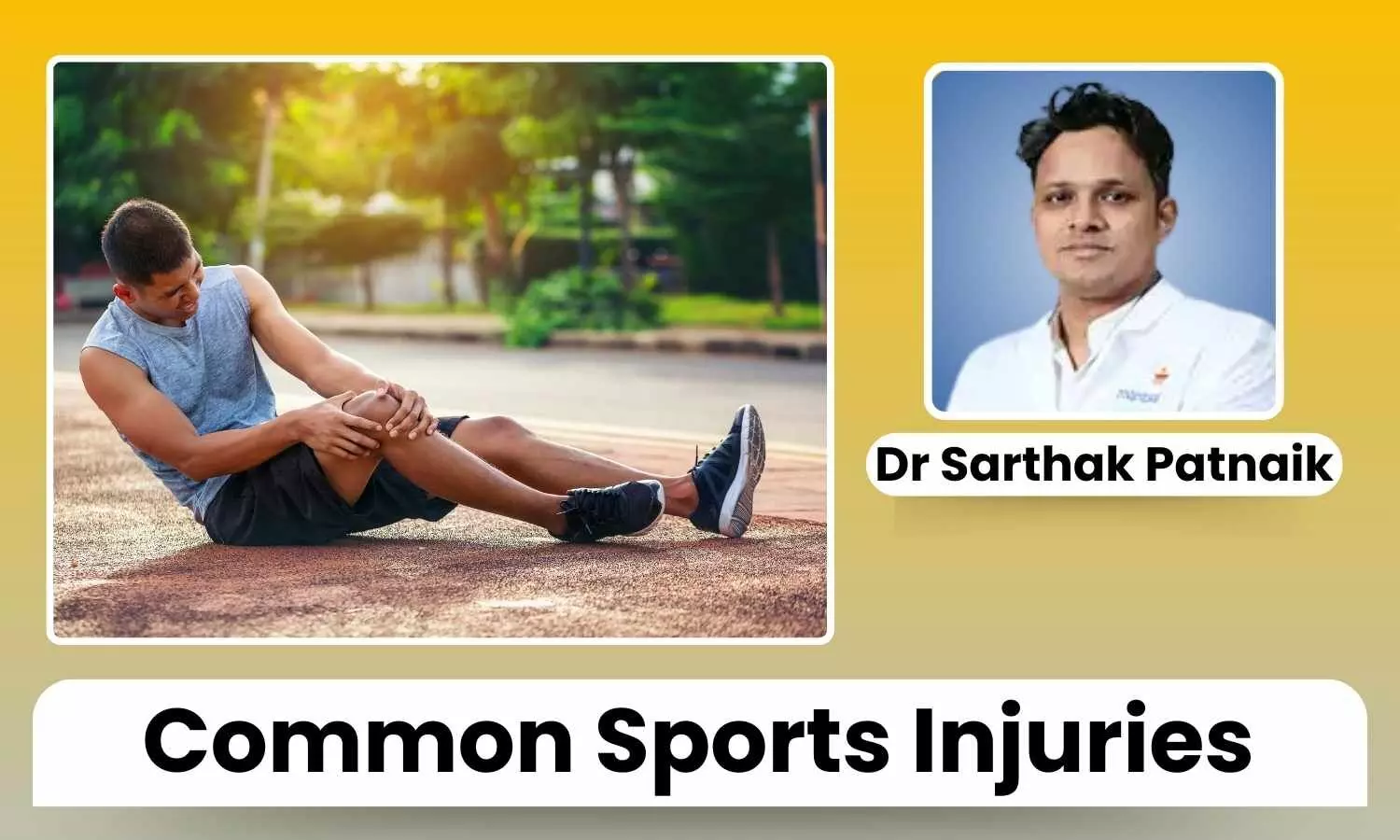From Sprains to Strains: Everything You Need to Know About Sports Injuries - Dr Sarthak Patnaik

Sports, whether professional or recreational, offer numerous physical and mental benefits. However, the risk of injury is an inherent part of athletic activity. Understanding common sports injuries, their causes, and appropriate treatments is crucial for athletes of all levels to maintain their well-being and stay in the game safely.
Sports injuries can vary from minor sprains and bruises to serious fractures and ligament tears. Though the adrenaline rush of competition and the quest for fitness propel athletes and active individuals, overlooking injury prevention and proper treatment can come to haunt them miles down the road.
Common Culprits: Causes of Sports Injuries
Several factors contribute to sports injuries. Accidents, such as falls or collisions, are a significant cause, leading to acute injuries. However, overuse syndrome, resulting from repetitive strain on muscles and joints, is equally prevalent.
Improper training techniques, inadequate warm-ups, and insufficient cool-downs further increase the risk. Poor technique during sports activity can put undue stress on certain joints and muscles. Insufficient training can leave muscles weak and more prone to injury.
Types of Sports Injuries: Acute vs. Chronic
Sports injuries are generally classified into two types: acute and chronic.
Acute injuries arise suddenly, often with a specific event (a tackle or a fall) marking their onset. Sprains, strains, dislocations, and fractures are examples.
Chronic injuries are the opposite and occur over time due to repetitive stress. This category includes tendinitis, stress fractures, and overuse syndromes.
Specific Injuries and Their Symptoms
- Concussions: These mild traumatic brain injuries, which are caused by a bump, blow, or jolt to the head, can include symptoms such as headaches, dizziness, memory loss, and loss of consciousness.
- Bruises: Resulting from impact, bruises lead to bleeding into deep tissues, resulting in discolouration and pain.
- Sprains: Injuries that occur when a joint has achieved more than its usual range of motion, tearing up ligaments. Common symptoms include bleeding and swelling.
- Dehydration: Loss of excess fluid can result in heatstroke, which may be fatal.
- Dental and Nasal Injuries: Impact (blow) on the face while playing sports can lead to gum injuries, broken teeth, nosebleeds, and fractures.
- Knee Injuries: The knee joint is especially susceptible, with the most common injuries being ACL and MCL tears, which are very common among seal team and army members, meniscus tears, fractures, dislocations, and patellar tendinitis. In sports that require a sudden change of direction, ligament injuries are quite common.
Diagnosis and Treatment: Getting Back on Track
Sports injuries are often diagnosed through a detailed clinical examination, supplemented by radiological imaging (such as X-rays or MRIs) when indicated.
The typical protocol for initial treatment of acute wounding is RICE: Rest, Ice, Compression, and Elevation. This helps decrease swelling and pain. Break the acute phase with no heat, massage, alcohol, or activity.
Treatment approaches change depending on the severity and type of injury. Rehabilitation involves strengthening through physical therapy to regain flexibility and range of motion. In extreme cases, however, surgery may be needed. Psychological experts are also crucial for healing an individual dealing with a serious injury.
Prevention: Staying Safe and Active
The best way to reduce the risk of sports injuries is to prevent them in the first place. The following principles can greatly reduce the risk of injury:
- Warm-up: A comprehensive warm-up of at least 30 minutes prepares muscles and joints for action.
- Correct Footwear: Sports-specific shoes offer support & stability
- Protective Devices: The use of helmets, pads, and mouth guards are important in contact sports.
- Hydration: It is important to stay hydrated to prevent heat-related illnesses.
- Cool-down: Gradual stretching and light activity post-exercise improve muscle recovery.
- Scheduled Medical Checkups: Regular health assessments can catch issues before they become problems.
- Don't overexert: It's important that you listen to your body and not push beyond your limits.
By understanding the causes, types, and treatments of common sports injuries, athletes can take proactive steps to protect themselves. Emphasizing prevention, proper training, and timely medical attention ensures a safer and more fulfilling athletic experience.


